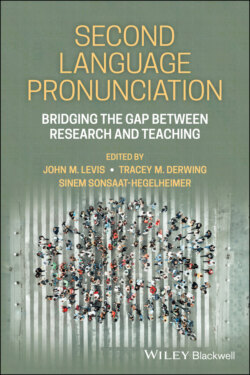Читать книгу Second Language Pronunciation - Группа авторов - Страница 21
2 Integrating Pronunciation into Language Instruction
ОглавлениеJohn M. Levis1 and Andrea Echelberger2
1 Iowa State University
2 Literacy Minnesota
“Teacher [only] you understand me” said a visibly frustrated student in a beginning level adult ESL class. Heads nodded in agreement around the room. The student recounted an experience she’d had over the weekend while shopping in the community. She’d asked a native English-speaking store employee a question, one she had practiced numerous times in class the previous week. The employee couldn’t understand her after she had unsuccessfully repeated it several times, and walked away without answering.
This story highlights a frequent occurrence in language classrooms, especially for individuals early in their L2 learning. The teacher knew that the students had pronunciation difficulties, but after several years of working with this population had become accustomed to their pronunciation patterns, making unconscious allowances in listening and largely ignoring pronunciation teaching. This “teacher ear” means that language teachers may have a different interpretation of intelligibility than other people because of exposure to accented speech and comfort with negotiation for meaning (Macdonald, 2002). While it is beneficial for students to have teachers who can understand them, in this case it did not contribute to the improvement of their ability to communicate outside of class. As one teacher in MacDonald’s study observed, “Out in society… not everyone is as patient and understanding” (p. 8). The approach of this teacher to pronunciation instruction parallels the practices of many teachers. When they address pronunciation in the classroom, it is often in an unsystematic and reactive manner (Foote et al., 2016), only addressing errors that “are too prominent to be ignored” (Levis & Grant, 2003, p. 13). This chapter suggests one way to address pronunciation consistently, by integrating pronunciation with the teaching of other skills. We take the perspective of teachers working with immigrant/refugee populations in Adult Basic Education (ABE) programs in the United States.
